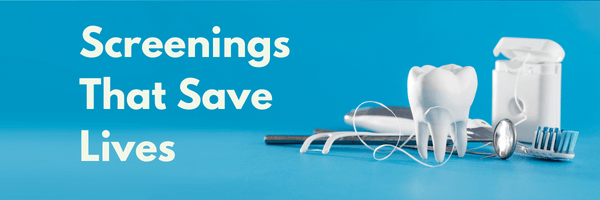
How TikTok Exposed the Hidden Dangers of Mouthwash
Posted September 12, 2024
Did you know that a whopping 93% of teens and young adults aged 12-29 are online? And the numbers continue to rise among older age groups too! Around 81% of adults aged 30-49 and 70% of those aged 50-64 are also navigating the digital landscape. Even more fascinating, 61% of U.S. adults seek health information online, and 37% turn to social media for insights on health and healthcare.
The Power of Social Media in Dental Health
Social media has revolutionized how we access and consume information, especially regarding dental health. Gone are the days when we relied solely on in-person consultations and printed brochures. Today, tips, advice, and updates on the latest dental technologies and treatments are just a click away. This digital shift has empowered people to take control of their oral health, making them more informed and proactive. For dental professionals, staying current with what’s trending on social media is now essential.
Unveiling the Truth About Popular Mouthwashes
As a dental hygienist, I trusted the mouthwashes I recommended to my patients. I believed that while flossing removed soft plaque, an antiseptic mouthwash would eliminate any lingering bacteria. But then, some of my patients mentioned a TikTok video revealing the surprising acidity of certain mouthwashes. Intrigued and concerned, I decided to investigate further.
We measure the pH levels using a scale of 0-14. 7 is completely neutral, with anything below that being acidic and above that being basic. The more acidic the pH level is, the more erosive it is to tooth structures. Anything that’s 5.5 or below is considered damaging to teeth. Below is a table of popular mouthwashes and their pH levels to better understand:
| Mouth Washes | PH Level |
| Colgate Total Advance | 6.31 |
| BreathRX Anti-Bacterial Rinse | 6.21 |
| ProFresh Chlorine Dioxide Rinse | 6.15 |
| Listerine Zero Mouthwash | 6.02 |
| ACT Restoring with Fluoride | 5.56 |
| Scope | 5.55 |
| Peridex | 5.48 |
| Listerine Total Care Mouthwash | 5.44 |
| Crest ProHeath Clinical Deep Clean | 5.18 |
| Chlorhexidine Alcohol Free | 5.1 |
| Fluoridex Daily Renewal | 5.1 |
| Listerine Antiseptic Mouthwash | 4.88 |
| Oral-B Anticavity Rinse | 4.72 |
| Crest Pro-Health | 4.27 |
| Peroxyl Antiseptic Oral Cleanser | 3.9 |
| Tom’s of Maine Wicked Fresh | 3.89 |
Now, why on earth would a mouthwash be acidic? It actually has to do with the way fluoride compounds are stabilized inside the mouth rinse. In fact, the slightly lower pH can actually help fluoride and hydroxyapatite crystals make their way into the tooth enamel more effectively. So there is some “good” that comes from a slightly acidic mouthwash pH in some cases.
Mouthwash: Friend or Foe to Heart Health?
TikTok wasn’t done enlightening me yet! Another patient mentioned a video claiming mouthwash could harm heart health. Initially skeptical, I decided to dig deeper, given the valid concerns about pH levels.
Research revealed that antiseptic mouthwashes could disrupt Nitric Oxide (NO) production in the mouth, essential for various bodily functions, including cardiovascular health. The oral microbiome plays a crucial role in this process, starting with the reduction of nitrate to nitrite. Antiseptic mouthwashes can eliminate the beneficial bacteria necessary for this pathway, potentially leading to NO-deficient conditions and serious health complications.
An in vitro study showed that mouthwashes containing 0.12% chlorhexidine may destroy over 90% of the oral nitrate- reducing bacteria, leading to an 85% reduction in reduced nitrate. Several small clinical studies have observed an association between frequent mouth wash use (containing chlorhexidine or alcohol-free mouthwash) with increased blood pressure, triggering the risk of hypertension and decreased nitrite
levels.
A longitudinal 3-year study observed that participants who used OTC mouthwash more than twice daily had a 55% significantly elevated risk of prediabetes and diabetes compared to less frequent users and non-mouthwash users. Interestingly, mouthwash use less than twice daily had no association, suggesting a potential threshold effect. However, the study lacked details on mouthwash types or antibacterial agents, necessitating further investigation.
These eye-opening revelations about pH levels and Nitric Oxide underscore the need for further research. Thanks to TikTok and my curious patients, I’ve started rethinking the products I recommend daily. I encourage you to do your own research and explore what’s
being discussed on social media about dentistry to stay informed on viral topics.
Work Cited
Alrashdan, Mohammad, et al. “The Effects of Antimicrobial Mouthwashes on Systemic Disease: What Is the Evidence?” National Library of Medicine, 17 Oct. 2023, www.ncbi.nlm.nih.gov/pmc/articles/PMC10690546/.
DiFoggio, Whitney. “How Acidic Is Your Mouthwash? What Are Alkaline Mouthwashes.” TalkTalkGirl.Com, 18 Oct. 2023,
www.teethtalkgirl.com/dental-health/alkaline-mouthwashes/.
Male, Danielle Moyer. “The Role of the Oral Microbiome on Nitric Oxide Production and Healthy Blood Pressure.” Casi.Org, 8 Feb. 2024,
www.casi.org/oral-microbiome-nitric-oxide-production-healthy-blood-pressure.
Male, Danielle Moyer. “The Truth About Mouthwash and Heart Health.” Casi.Org, 4 Apr. 2024, www.casi.org/truth-about-mouthwash-and-heart-health#:~:text=Current%20research%20s
uggests%20that%20indiscriminate,needed%20to%20draw%20definitive%20conclusions.
We connect and educate more than 900,000 job seekers in the U.S. and Canada to build better places to work through teams that excel.




.png)



.png)
